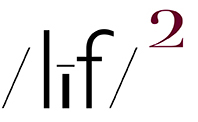all photos ~ (embiggenable)
I RARELY LEAVE THE HOUSE FOR THE SOLE purpose of making photographs. That’s cuz I do not go to photographs, rather, I let photographs come to me. Or, to write in other words, while I always leave the house with a picture making device, my habit is not to search for photograph making opportunities but, rather, to make a photograph only when some thing pricks my eye and sensibilities as I am moving about the planet.
That written, there is, for me, one situation that violates that rule; that is, during what I call the 5th season––the season situated at the end of leaf-peeping season and the unset of winter.
I will admit that one of the reasons I enjoy making photographs during that time is that I get a great deal of satisfaction from creating such photographs which, for me, function as a sharp-stick/poke-in-the-eye, as it were, to the hordes of picture makers who salivate at the sight of a landscape chock full of wall-to-wall blazing colors, colors that are most often over saturated in processing cuz, ya know, nothing exceeds like excess. Apparently, they must believe that someone in the CREATION DEPARTMENT––quite possibly the Time Bandits*––screwed up, hue and saturation wise, and they need to assume the role of an ex post facto art director in order to '“correct” that mistake.
On the other hand, re: my photograph making fascination with the 5th Season, I tend to believe that life and the planet earth is in a constant state of transition / flux, or, in the case of the 5th Season, entropy: BTW, a progression that could also apply to my kitchen sink photographs inasmuch as the housewares in my sink are in a transitional condition–– pictured in the transition from clean > dirty > to clean again (or least one can assume so inasmuch as what a viewer “sees” in a photograph is based upon that viewer’s assumptions).
In fact, it could be reasonably stated that all photographs document a transition in that, even though a photograph depicts a static moment in time, every photograph contains, by inference, that there were moments before and after the photograph was made.
*When the Supreme Being finally catches up with the Time Bandits, he is rather pissed at them for having stolen the Map of Time which allowed them to travel through time portals on a looting spree…
Supreme Being: I should do something very extroverted and vengeful to you. Honestly, I'm too tired. So, I think I'll transfer you to the undergrowth department, brackens, more shrubs, that sort of thing... with a 19% cut in salary, backdated to the beginning of time.
Randall (one of the Bandits): Oh, thank you, sir.
Supreme Being: Yes, well, I am the nice one.
